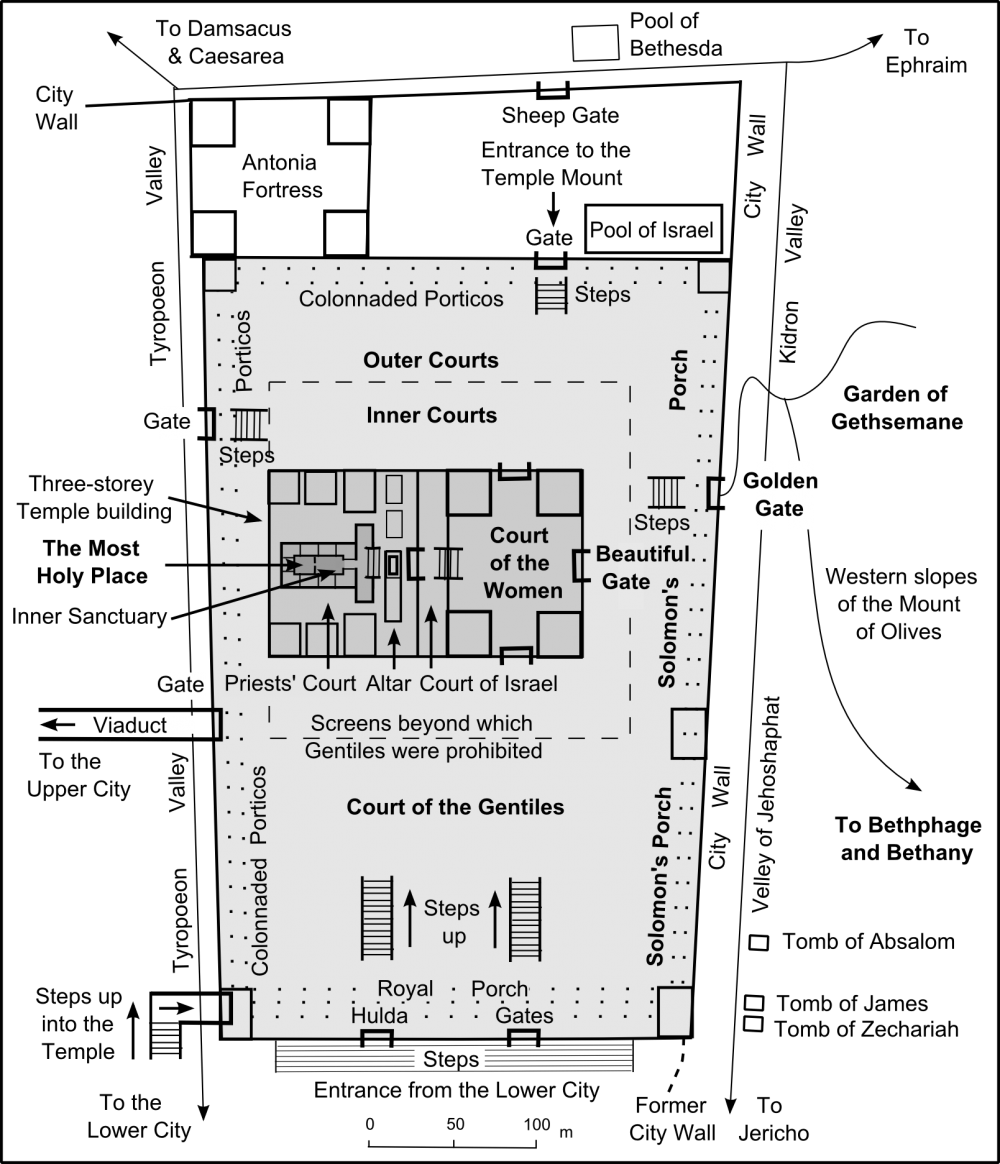24 Mar. Jesus heralds the end of the Jewish sacrificial system
"When Jesus returned to Jerusalem, he went into the Temple and began to throw out those who were buying and selling there."
"He turned over the tables of those who were exchanging different kinds of money [to buy shekels to pay the Temple tax], and he upset the benches of those who were selling doves [to be offered as sacrifices]."
"Jesus refused to allow anyone to carry goods [for sale] through the Temple courts."
"Then he taught the people, saying, 'It is written in the Scriptures, "My house will be called a house of prayer for people from all nations". But you are changing God's house into a hideout for robbers.'"
"The leading priests and the teachers of the [Jewish] law heard all this and began trying to find a way to kill Jesus. They were afraid of him, because all the people were amazed at his teaching."
(Mark 11:15-19)

On the Monday morning following 'Palm Sunday', Jesus returned to Jerusalem and entered the outer courtyard of the Temple (see Malachi 3:1). Here he saw the courtyard merchants making their huge profits changing foreign currencies and selling their overpriced doves and pigeons for sacrificial offerings on the altars of the Temple (see Leviticus 5:7).
Angered by their commercialisation of a place of prayer, Jesus turned over the tables of the money changers and scattered their silver coins on the floor.
The Temple money changers were exchanging local and foreign currency at inflated rates so the Jews could pay their temple tax in pure silver coins that didn’t bear the name of any earthly king. The temple tax had to be paid in shekels or half shekels (minted originally in Tyre, but later issued by the Jewish authorities in Jerusalem) as these were the only coins acceptable to the Jewish priests because they didn’t carry the portrait of an earthly ruler such as the Roman emperor.
This payment of half a shekel of silver was equivalent to two silver drachmas - the common currency in this part of the Roman empire (see Matthew 17:24-27). Jesus was exasperated that the Jewish Temple authorities were ignoring this exploitation of the pilgrims who had come to worship God. He shouted out, “It is written in the Scriptures, ‘My Temple will be called a house for prayer for people from all nations.’ But you are changing God’s house into a ‘hideout for robbers’.” (Mark 11:17) (see Isaiah 56:7 & Jeremiah 7:11).
In a fit of righteous indignation, Jesus then began driving out the merchants who were selling birds to be offered as sacrifices. These birds were sold at exorbitant prices to poor pilgrims who couldn't afford the cost of sacrificing an expensive unblemished lamb (see Leviticus 5:7-10 & Luke 2:24).
With the ultimate sacrifice for mankind's wrongdoing about to be paid by the death of Jesus – the “Lamb of God, who takes away the sin of the world!” (John 1:29) – the Temple had now outlived its purpose as the place where Jews could offer sacrifices in an attempt to gain God’s favour.
So Jesus's symbolic actions – destroying the sacrificial system of the Temple for a short period of time – pointed the Jewish people both towards the coming destruction of the Temple itself (forty years later, in 70AD), and the imminent redundancy of the sacrificial system as the accepted means of 'getting right with God'.
Once again, the chief priests looked for a way to kill Jesus because the crowds were amazed at his powerful teaching, at his criticism of the Jewish religious leaders, and at his 'revolutionary' ideas.
The Jewish crowds would also have been well aware that Jesus, by his actions, was fulfilling Zechariah's prophesy about the start of the 'End Times': "At that time there will not be any buyers or sellers in the Temple of the LORD All-powerful." (Zechariah 14:21) So they were looking expectantly to Jesus to bring about the time when God would restore justice and peace on earth (by getting rid of the Romans), and would set his 'anointed one' - the 'Messiah' or 'Christ' - on the throne of Judaea.
The map shows the layout of the Jewish Temple and the Temple courtyards in 30AD.
You can read more about the events leading up to the death of Jesus on 'Good Friday' @ https://www.thebiblejourney.org/…/jesus-heralds-the-end-of…/
